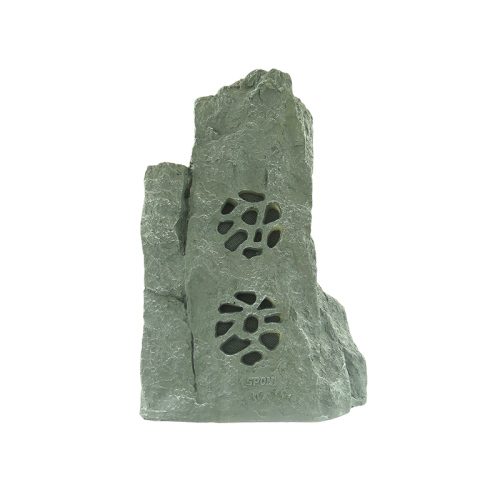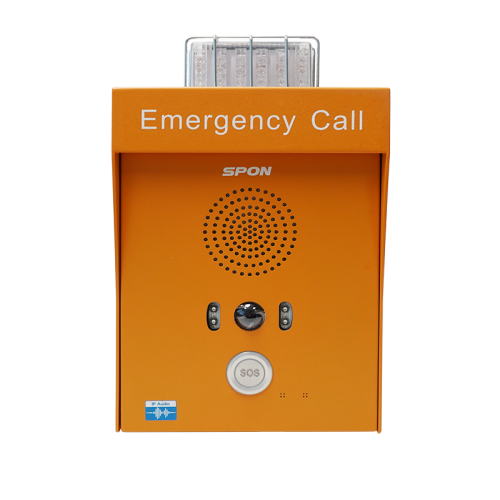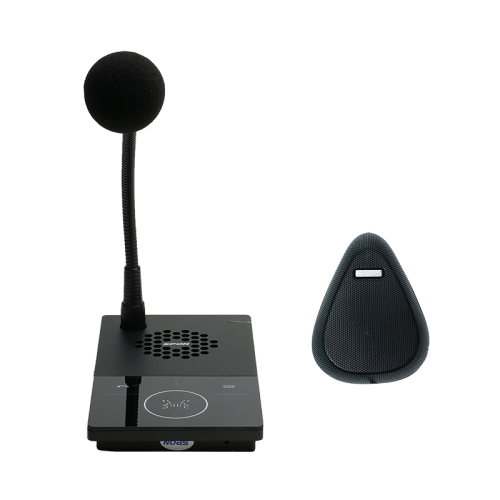How an IP Paging System Enhances Emergency Solution in Workplaces
How an IP Paging System Enhances Emergency Solution in Workplaces
Blog Article
Comprehensive Overview to Public Address Equipments
Public address (PA) systems are commonly experienced in numerous jobs such as office buildings, property complicateds, commercial office complex, schools, health centers, train stations, airports, bus terminals, factories, and financial institutions - IP Paging Microphone. This guide will provide a thorough introduction of PA systems

Parts of a PA System
Despite the kind of PA system, it usually includes 4 almosts all: source tools, signal boosting and processing tools, transmission lines, and speaker systems.
Resource Devices
Songs Gamers: Utilized for history songs.
Microphones: Consists of zone-select microphones and conventional microphones.
Voice Storage Space Instruments: For storing organization and emergency program messages.
Signal Handling and Boosting Tools
Audio Signal Cpu: Takes care of audio signal compensation, depletion, equalization, and so on.
Pre-Amplifier: Pre-amplifies sound signals.
Power Amplifier: Enhances audio signals to drive audio speakers, offering consistent voltage output.
Transmission Lines
The service administration platform software program allows the monitoring facility to apply centralized administration over the program and intercom interaction systems. It promotes online tool standing surveillance, fault diagnosis, and troubleshooting, solidifying system stability and uniformity.
Audio speakers
Ceiling Speakers: Indoor, flush-mounted in the ceiling, continuous voltage or constant insusceptibility.
Wall-Mounted Speakers: Wall-mounted, constant voltage or constant impedance.
Column Speakers: Free-standing, appropriate for indoor or outside usage.
Horn Speakers: High level of sensitivity, appropriate for outside or indoor usage.
Camouflaged Speakers: For outdoor setups like parks or gardens, developed to appear like rocks, mushrooms, or stumps.
Audio Technical Specs of PA Equipments
In everyday settings, regular audio stress degrees are:.
• Workplace sound: 50-60 dB.
• Regular conversation: 65-70 dB.
• Textile factory noise: 110-120 dB.
• Tiny quality shooting: 130-140 dB.
• Large jet airplane sound: 150-160 dB.
Signal-to-Noise Proportion (SNR)
SNR gauges the proportion of the signal voltage to sound voltage, shared in decibels. A greater SNR shows much less noise and much better audio quality. Generally, SNR should go to least 63 dB, with high-fidelity audio speakers getting to over 110 dB.
Input Sensitivity
This is the minimal input voltage called for to accomplish the ranked output power. Greater level of sensitivity means much less input signal is required. Normally, power amplifiers have an input sensitivity of 0.775 V (0 dB) to 1.5 V (+6 dB).
Optimum Output Power (Speakers)
The maximum power an audio speaker can deal with simply put ruptureds without damages.
Rated Power (Audio Speakers)
.
The constant power a speaker can manage without distortion, determined in watts (W) Ranked power is a typical value, and speakers can take care of peak power approximately 2-3 times the rated power.
Constant Voltage vs. Consistent Resistance Outputs
Consistent Voltage (70V or 100V)
Utilizes voltage to drive audio speakers, allowing longer transmission ranges and several speakers in parallel. Nevertheless, sound top quality is somewhat inferior contrasted to constant resistance systems.
Power amplifiers have to match the voltage rating of the speakers to stay clear of damage.
Consistent Impedance.
Uses present to drive speakers, providing better audio top quality but minimal transmission range (approximately 100 meters)
Resistance matching is vital; as an example, an 8Ω amplifier must be matched with 8Ω speakers.
Picking and Configuring Audio Speakers
Speaker Selection
Indoor Spaces with Ceiling: Use flush-mounted ceiling speakers without a rear cover.
Indoor Spaces with Only a Structure: Use ceiling audio speakers with back covers or hanging ball-type speakers.
Exterior Locations: Use weatherproof column audio speakers or horn audio speakers.
Parks and Gardens: Use concealed audio speakers created for aesthetic purposes.
High-End Interiors: Use classy hanging speakers.
Fire-Safe Areas: Use fire-resistant audio speakers with closed designs.
Audio speaker Setup
Speakers must be dispersed uniformly throughout the service location to make sure a signal-to-noise ratio of at the very least 15 dB. Typical history sound degrees and suggested speaker positioning are:.
Premium workplace corridors: 48-52 dB.
Huge shopping center: 58-63 dB.
Active road areas: 70-75 dB.
Speakers should be placed to guarantee a sound stress degree of 80-85 dB in many settings. Ceiling speakers need to be spaced 5-8 meters apart, or 8-12 meters for history music just. For emergency situation programs, make sure that no area is more than 15 meters from the local audio speaker.
Amplifier Sizing
Computation Approach:
For solution and organization PA systems: P= K1 × K2 × ΣPo where:.
P = Complete amplifier outcome power (W)
K1 = Line loss settlement factor.
K2 = Aging aspect (1.2-1.4)
ΣPo = Complete power demand.
For emergency alarm systems, use 1.5 times the complete variety of speakers.
Example Calculation:
For a background songs system with 10 speakers at 20W each: P= 1.26 × 1.2 × 10 × 20W × 0.7= 211W.
Final amplifier capability need to be 1.3 times this value: 211W × 1.3= 274W
Installment Requirements
Audio speaker Positioning
Speakers need to be uniformly and tactically dispersed to meet insurance coverage and sound high quality needs
Power Supply
Little PA systems can use normal power outlets, while systems over 500W need a committed power supply. Power should be stable, with automatic voltage regulators if essential. The power supply should be 1.5-2 times the devices's power intake
Cord and Conduit Installment
Use copper-core cords for signal transmission. Wires must be shielded and routed with suitable channels, preventing disturbance from electrical lines. Ensure appropriate splitting up in between power and signal lines.
Lightning Protection and Grounding
PA systems require appropriate grounding to stop damages from lightning and electrical disturbance. Usage committed grounding for equipment and make certain all basing actions meet safety and security standards
Installation Quality
Cord and Port Top Quality
Usage high-quality cables and adapters. Make sure connections are secure and correctly matched to avoid signal loss or disturbance.
Audio speaker Links
Maintain correct phase placement in between speakers. Use trusted methods for connecting wires, such as soldering or incurable blocks, and secure connections from ecological damage.
Grounding and Safety And Security Checks
Confirm all grounding is properly mounted and check the safety and security of power links and devices settings. Perform thorough evaluations before finalizing the setup.
Checking and Change
Examine the whole system to make sure all elements work appropriately and fulfill style requirements. Readjust setups as required for ideal performance.
Workmanship Demands for Public Address Equipments
Building Quality Requirements
The quality of building and construction in a public address (PA) system job is essential to meeting design specifications and user needs. Therefore, it is important to purely follow the layout plans, stick to standards, prevent rework and hold-ups, and maintain thorough building and construction logs. Key areas to concentrate on consist of:
Cable Television Selection and Setup
Throughout the building of a PA system, interest is often concentrated on devices, however the selection of transmission cables is also crucial for achieving satisfactory audio quality. Top quality broadcasting tools (amplifiers, audio speakers, and so on) is essential, but the high quality of the transmission wires likewise influences audio quality.
Identical audio speaker cables have intrinsic capacitance in between the cords, which is not appropriate for long-distance transmission as it can undermine high regularities and create unclear or muffled high sounds. Twisted pair cords can effectively overcome this concern and ought to be utilized for long-distance transmission.
Protected twisted pair cable televisions protect against electro-magnetic interference and boost wire resilience, making them suitable for long-distance installations. Thicker wires reduce transmission loss yet rise expense and installation difficulty.
Usage well balanced links for all signal connections in between PA system devices, with firm endpoints.
For systems with fire alarm system features, make use of flame-retardant or fire-resistant copper-core IP PA System cable televisions.
Wires should be transmitted with steel avenues or cord trays, and should not share trays with lights or power lines. When splicing is necessary, utilize specialized adapters and leave sufficient cable size at both ends with clear irreversible markings.

Attaching Speakers and Program Lines
When connecting audio devices, it's critical to make certain phase consistency in between speakers and program lines. Stage interference between audio speakers can create considerable variants in audio stress degrees, bring about uneven sound circulation. Adhere strictly to circuitry tags and standardized link techniques.
3 typical link approaches in PA systems are:.
Twisting Method: Stripping insulation from wires, twisting them together, and securing them with tape or clamps. This technique is easy but may deteriorate with time.
Screw Terminal Approach: Removing insulation and placing cords right into screw terminals, after that tightening up the screws. This technique is frequently utilized.
Soldering Approach: Removing insulation, twisting cables, and soldering them with each other, after that covering with tape. This approach is extra ideal and reputable for high-demand or damp environments.
No matter the approach, usage tinned cable to help with soldering and stop corrosion. Use PVC or metal channel to shield subjected cables from junction boxes to speakers.
System Grounding
To minimize interference from the power system, different protective and operational groundings should be developed. Advised method is to install separate copper strips for weak and solid electric systems in their corresponding upright shafts.
The general grounding resistance ought to not surpass 1Ω.
Construction Examination
Due to the complexity of PA systems with various links and parts, detailed examination is essential. General examinations ought to consist of:
Safety checks of equipment installation.
Verification of power line setups (IP Speaker).
Accuracy of connections and terminations
Special focus should be provided to tool settings, such as resistance matching turn on speakers. Validate that buttons are established correctly to prevent damage. Check the output option switches over on signal source gadgets, settings on signal processing devices, amplifier bridging switches, and power supply setups.
When these steps are validated, prepare for devices debugging. Since debugging techniques vary based upon specific task requirements, they are not covered in information here.
Quality Records
Certifications, technical requirements, and documentation for audio speakers, units, transformers, controllers, outlets, amplifiers, audio processing equipment, protected cords, and so on.
Pre-installation, surprise assessment, self-inspection, and shared examination records.
Records of layout adjustments and final drawings - IP Speaker.
Quality evaluation and analysis documents for channel and cable setup
Records of PA system setup and debugging.
Major Installation Needs
Tools Installment Order
Area often made use of equipment like the main program controller at the top for easy accessibility. For more complicated systems with a 2.0-meter cabinet, setting frequently made use of devices in between 0.8 to 1.5 meters for comfort.
Devices Connection Order
The mixer outputs are dispersed to each amplifier, and if using pure power amplifiers, connect to the INPUT audio input. Amplifier outcomes after that attach to addressable terminals, area control boxes, or area selectors, and lastly to the speakers.
Circuitry Considerations
For extensive electrical wiring, separate audio and power lines making use of various suppliers' cables can help avoid confusion. Plan electrical wiring beforehand to avoid missing out on cords, which would certainly need remodeling the entire setup.
Power Supply
Utilize a committed power sequencer for PA systems to guarantee consistent power monitoring and regular gadget startup series. The primary power supply ought to consist of a ground line to secure equipment and protect against static-related dangers
Tools Selection
Do not count only on appearance; consider user evaluations and market reputation. Products from reputable manufacturers with comprehensive screening and experience are typically a lot more dependable
Wireless Microphones
For cordless microphones, pick UHF versions for much better range and signal security. Alternatives consist of one-to-one, one-to-two, one-to-four, or one-to-eight arrangements. For mobile usage, like headset microphones. Lavalier microphones might have poorer sound high quality and are prone to comments
.
Link Wires
Usage strong links for durability and stay clear of relying on adapters, which can trigger loose links over time. Appropriately solder connections to ensure durability and ease of maintenance.
Cabinet Installation
If making use of deep power amplifiers, make sure the cupboard dimensions (e.g., 600x600mm) work with the tools. Action cabinet deepness and spacing prior to installment.
Correct planning, high-grade devices, and precise installation and maintenance are essential to achieving optimum sound high quality and trustworthy performance in a system.

Audio speakers need to be positioned to make certain an audio pressure degree of 80-85 dB in most settings. When connecting audio tools, it's crucial to ensure stage uniformity in between speakers and program lines. Stage interference between audio speakers can trigger significant variations in sound pressure degrees, leading to unequal audio circulation. Amplifier results after that attach to addressable terminals, area control boxes, or area selectors, and lastly to the speakers.
Report this page